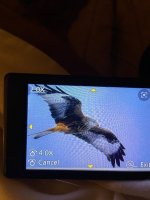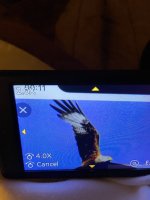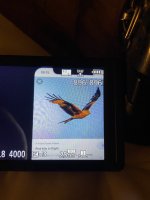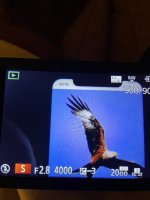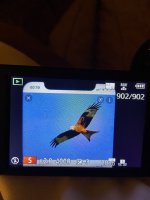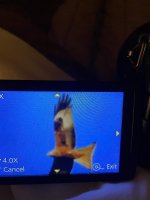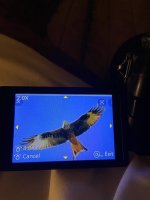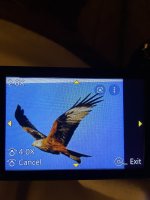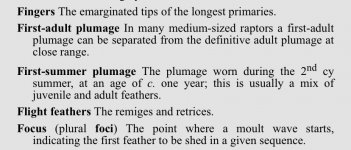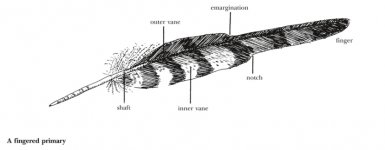
Ken, I agree that in some individuals P5 (6th finger in BK) is a bit longer and may stay out from the inner 4 primariers, but never as an emarginated or notched finger (look at the inner and outer vane) which actually would make it a finger.Trawling images on the web Joern, (presumably correctly ID’d?) some of the Red Kites appear to have a longer P6 than others and where that occurs it appears obviously longer than the adjoining secondary?
Thus what is the determinant factor from an anotomical perspective, ie if P6 is spread as a “finger” and being contrastingly black as the preceding 5 primaries and is longer than the adjoining pale secondary?
Cheers
Also all fingers (except for inner vane of inner finger) are unmarked and pure white in RK, compare with BK, also inner primaries are finely barred in RK and boldly in BK up two outer primaries, except in eastern birds




